Front/Space: Exhibitions and Programming
April 27, 2017
Text by Madeline Gallucci
Exhibitions & Programming: Utilizing space in non-conventional methods
As we wrap up our Open Call for 2017, exhibitions plotted on a calendar and studio visits scheduled, we look forward to a robust year of programming featuring artists, performers and cultural workers spanning across many disciplines. This year, our call specifically emphasized proposals that were from people of color, low-income individuals, immigrants, sex workers, folks living in rural areas, Muslims, youth, people with disabilities, women, GNC and LGBTQIA+ people, as direct action against the results of the election and current administration.
Our Open Call process consists of gathering proposals over a two month period and then distributing them to a Review Collective, a 8-12 person panel, consisting of past artists who have exhibited at Front/Space. We see this as a way to create a platform that is driven not by the vision of two co-directors, but a way to generate input from those who have experience with the space, understand our audience and can envision the project coming to fruition in the small but mighty project space. We are still exploring methods of inclusion in this process and understand there are still biases that exist in choosing the work, however, as one of the only remaining DIY spaces in the Crossroads Arts District, it is a way to keep Front/Space community driven. Once the proposals are chosen, my collaborator Kendell Harbin and I, schedule the exhibitions and work on the logistics. We strive to create autonomy and confidence in each individual’s process, guide artists in directions not fully explored, create access to new partnerships and audiences. This assistance can span from installation and hardware consultation, material collection, sponsorship solicitation and/or conceptual actualization.
Front/Space has been long identified as a place for experimentation and risk taking. Due to the unusual architecture of the space, many individuals respond with site-specific work or work that is not quite fully realized that can be best executed in a non-traditional gallery context. One of the greatest defining features of Front/Space are the windows, which creates many unique relationships between inside and outside viewers during openings or performances. Many artists use the windows as part of the work utilizing projection screens, painting, or even harnessing the power of the sun.
Often the scope of projects proposed go beyond the size of the space and some artists choose to use Front/Space as a launching point to other locations in Kansas City. As exemplified through Rail Sail and Floodplain Buyout (see below), Front/Space was utilized as a type of “visitor center” or a gathering place to then be transported to the site where the physical manifestation of the project would take place.
As we look forward to the next round of exhibitions, I want to reflect on a some of the exhibitions that showcase what we strive for in a proposal. This way, to someone who has never visited Front/Space, can understand the spectrum of experimentation that happens in this small storefront. For more examples of past exhibitions please visit frontspace.info
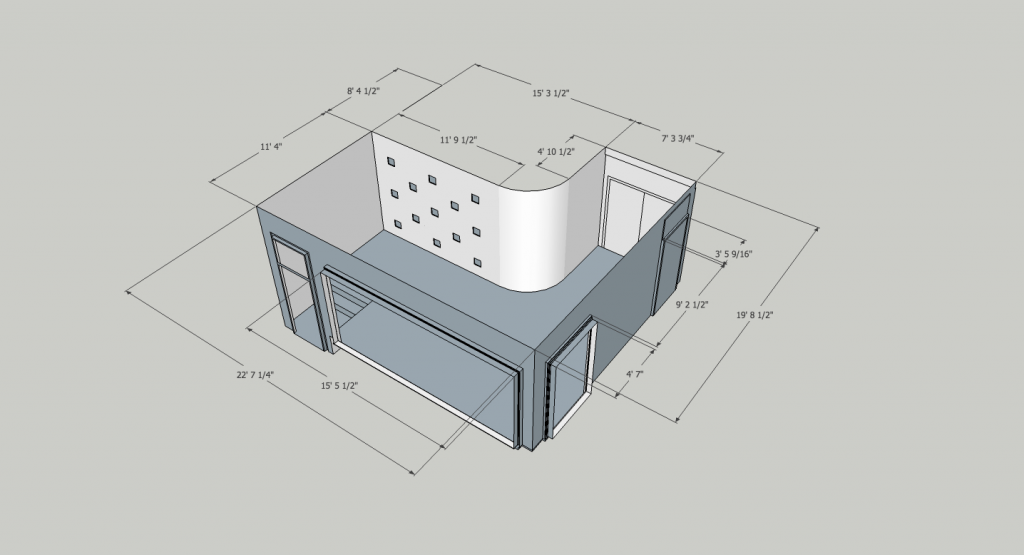
Architectural model of Front/Space.
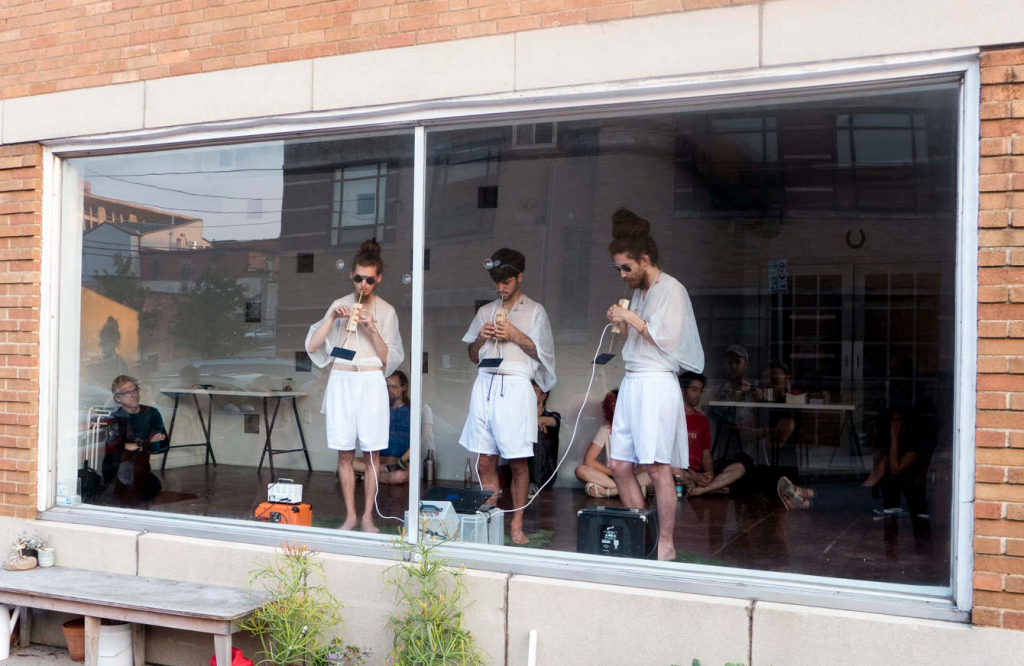
The ensemble SOLLUS, founded in 2015 by Rev. William Ellis Bradley and consisting of Joey Watson and J Ashley Miller, employed The Reverend’s solar-powered flutes (sollusflutes) as a means to emphasize the universal language of waveforms through long-tone compositions based on the orbital patterns of our solar system.
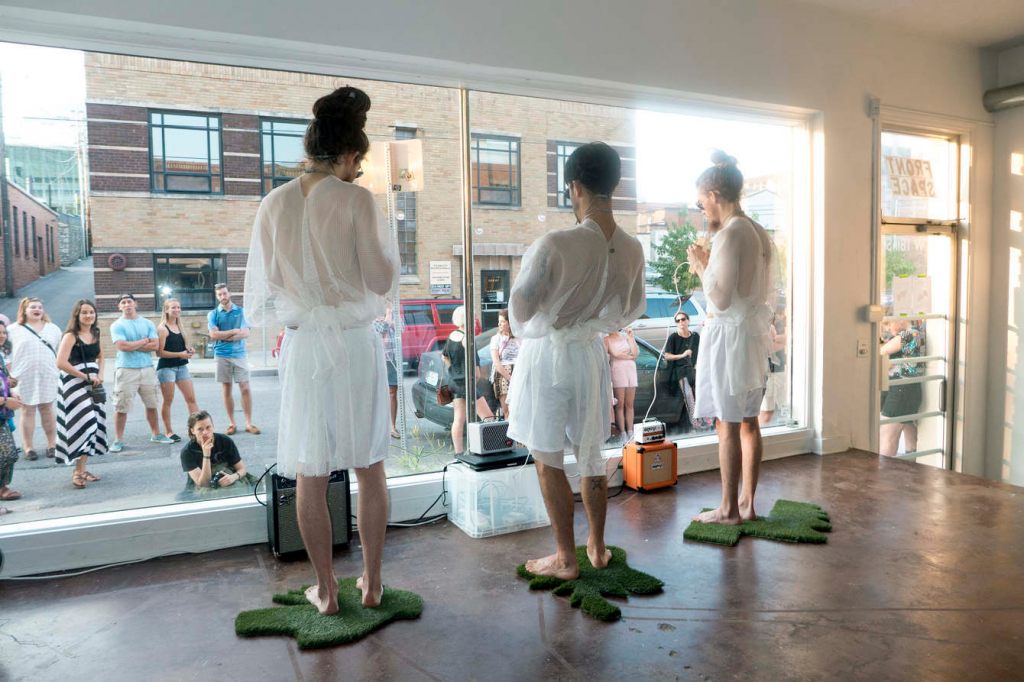
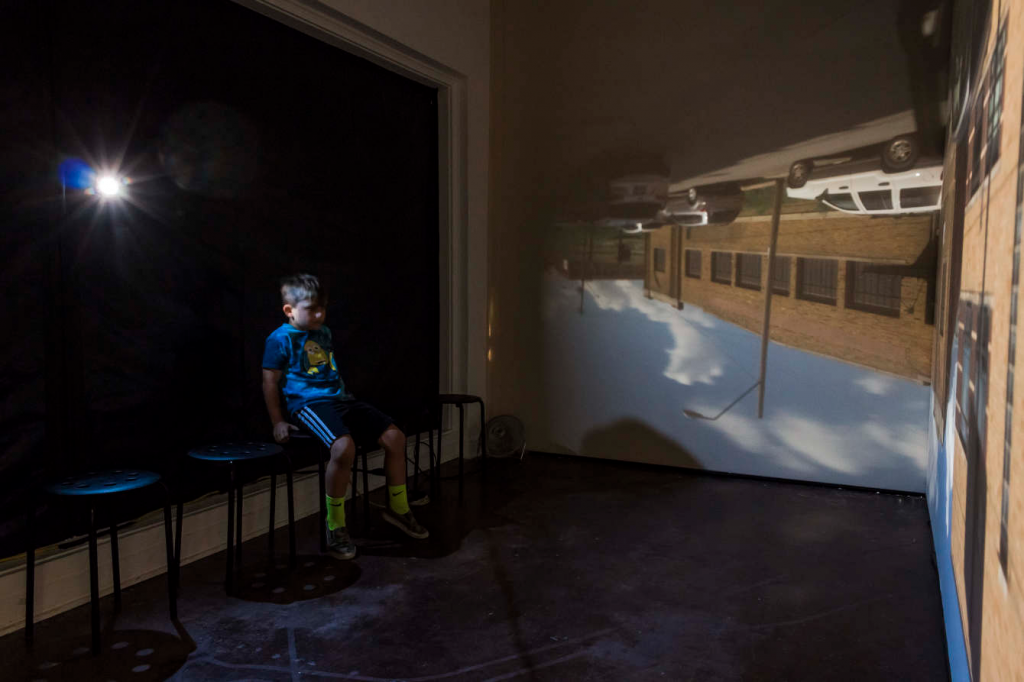 Practical Optics by Caitlin Horsmon transformed Front/Space into a camera obscura, an optical device that creates a projection of the outside world directly into a darkened room using the sun as a light source and a pinhole on the window to create the image.
Practical Optics by Caitlin Horsmon transformed Front/Space into a camera obscura, an optical device that creates a projection of the outside world directly into a darkened room using the sun as a light source and a pinhole on the window to create the image.

Zanzibar Dior teaches you how to Time Travel by Ariel Abrahams explored time travel using simple activities such as jumping in place, conversing with a stranger, or screaming out loud to examine the expansion and contraction of time.
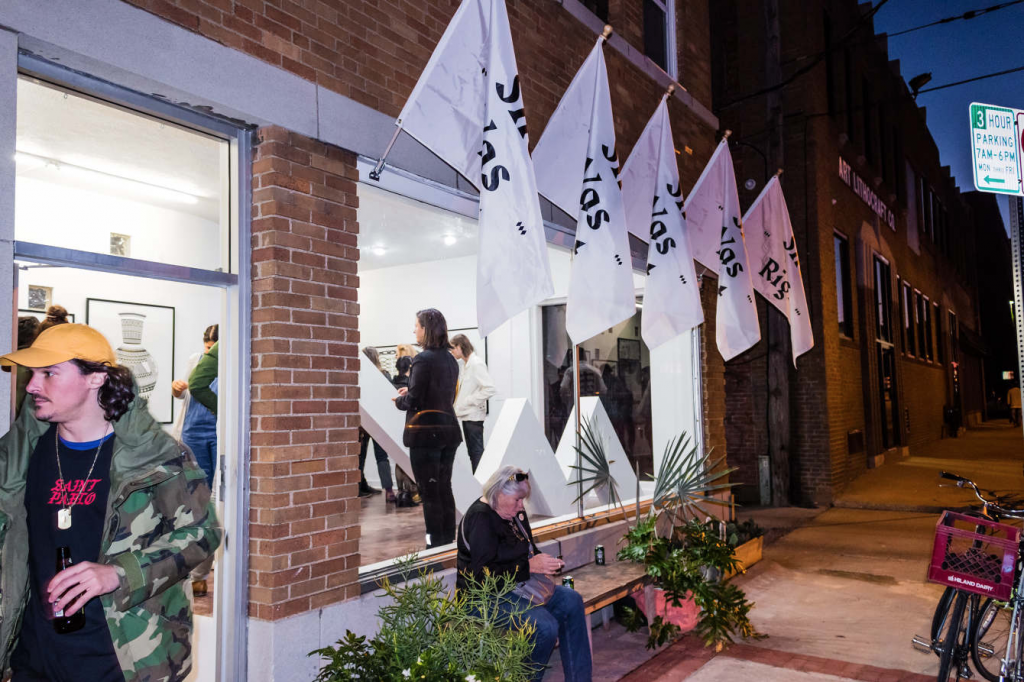
She Was Right: a Museum of Strange Archaeology by Erin Zona was dedicated to an experience of revelation, desire, and truth. This temporary institution’s exhibit featured works on paper, objects, and programming, presented in full museum spectacle. Through museum simulation, this show questions the hierarchies of authenticity and alters our notions of time, fact, and fantasy. Much like the exclamation “Eureka!” the phrase “She was right!” is meant to be associated with an act of discovery.
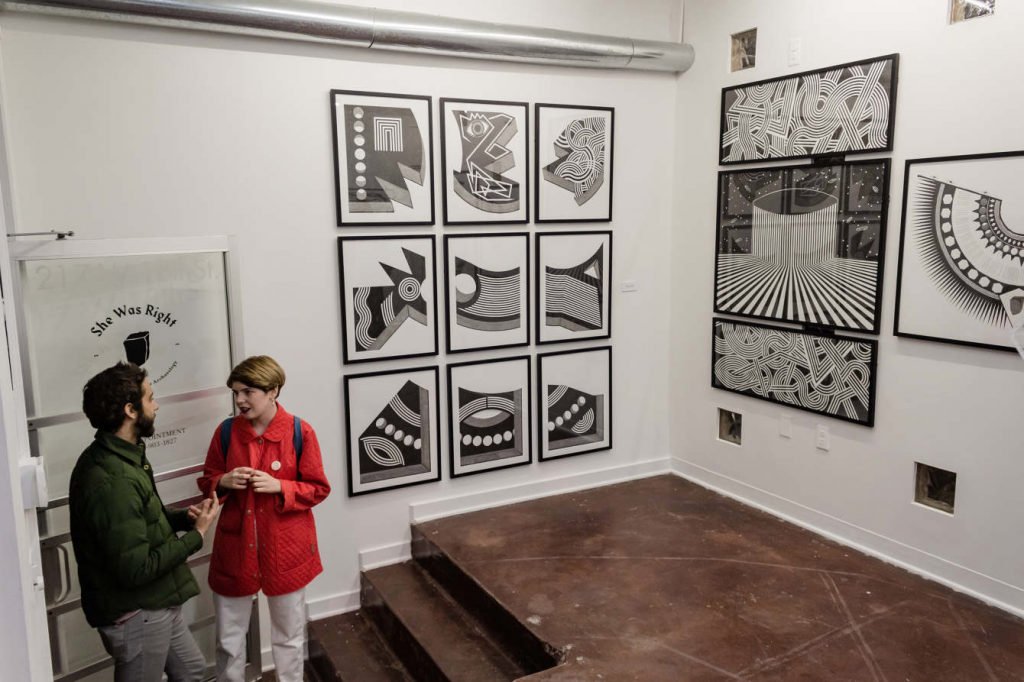
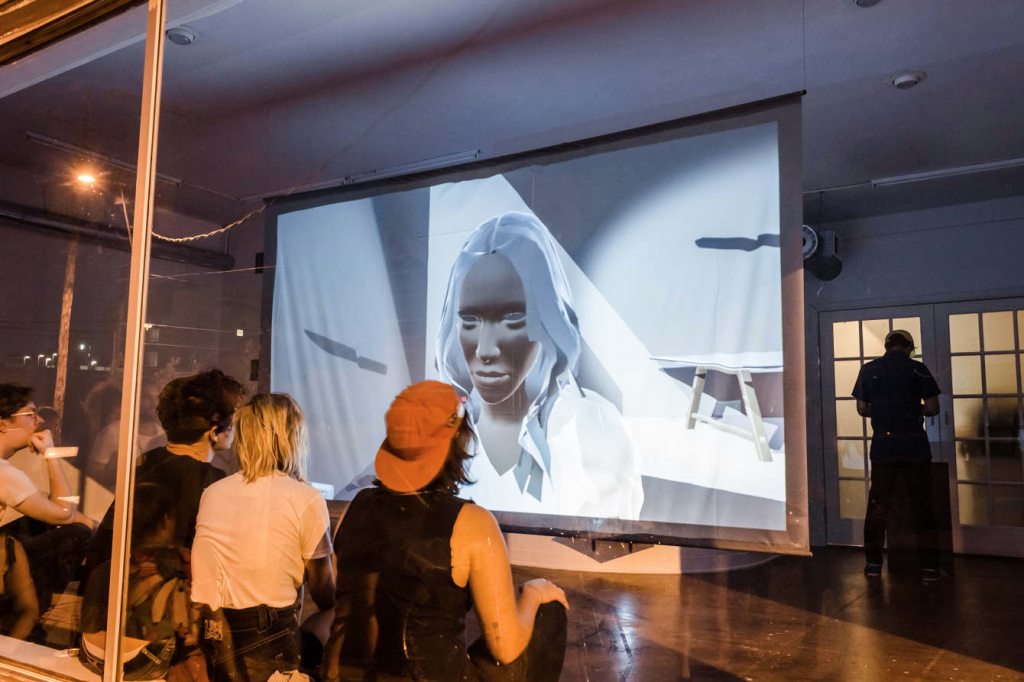 Are You Sure featured two new works by Ryan Kuo examining contemporary displacement. Nouns is an installation aimed at the Front/Space storefront window and inspired by the paintings of Edward Hopper and Giorgio de Chirico, in which bodies are petrified in self-examination by virtual light. The screen projects a videogame space that cycles between night and day in accelerated real-time, while multiple cameras work indefinitely to piece together a cheap 3D illusion, like a MakerBot or a wedding cake. File is a process work that speculates on the place of the artist (and everybody else) in the era of mobile studios and virtual workspaces. At its center is a hypertext essay multitasking as technical documentation for the File, a collaborative wiki for the team building the File, and a todo app that builds and releases anticipation for the always-imminent deployment of the File. The File asks the user to file the file in the file, and wonders, “How does one file oneself?”
Are You Sure featured two new works by Ryan Kuo examining contemporary displacement. Nouns is an installation aimed at the Front/Space storefront window and inspired by the paintings of Edward Hopper and Giorgio de Chirico, in which bodies are petrified in self-examination by virtual light. The screen projects a videogame space that cycles between night and day in accelerated real-time, while multiple cameras work indefinitely to piece together a cheap 3D illusion, like a MakerBot or a wedding cake. File is a process work that speculates on the place of the artist (and everybody else) in the era of mobile studios and virtual workspaces. At its center is a hypertext essay multitasking as technical documentation for the File, a collaborative wiki for the team building the File, and a todo app that builds and releases anticipation for the always-imminent deployment of the File. The File asks the user to file the file in the file, and wonders, “How does one file oneself?”
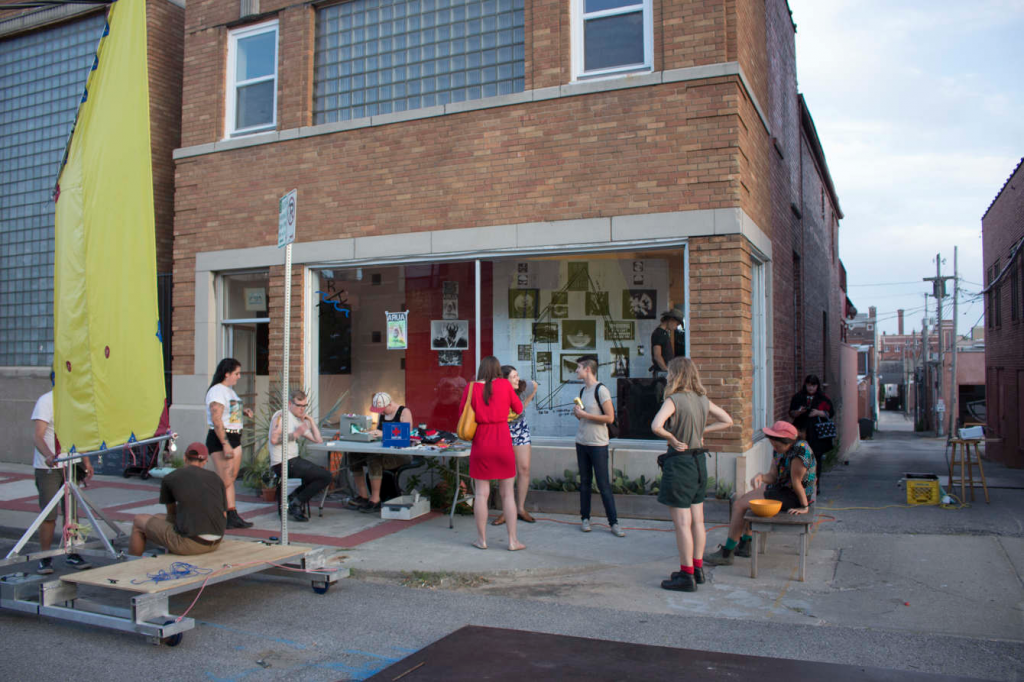
The Rail Sail by Joe Riley, Audrey Snyder and Ricki Dwyer, was a journey which deploys the imagery of wind, sea, and sail within the context of a post-industrial landscape of Kansas City. A wind-powered railroad vehicle connected urban and rural concourses, guided by chance and desire rather than reason or economy.
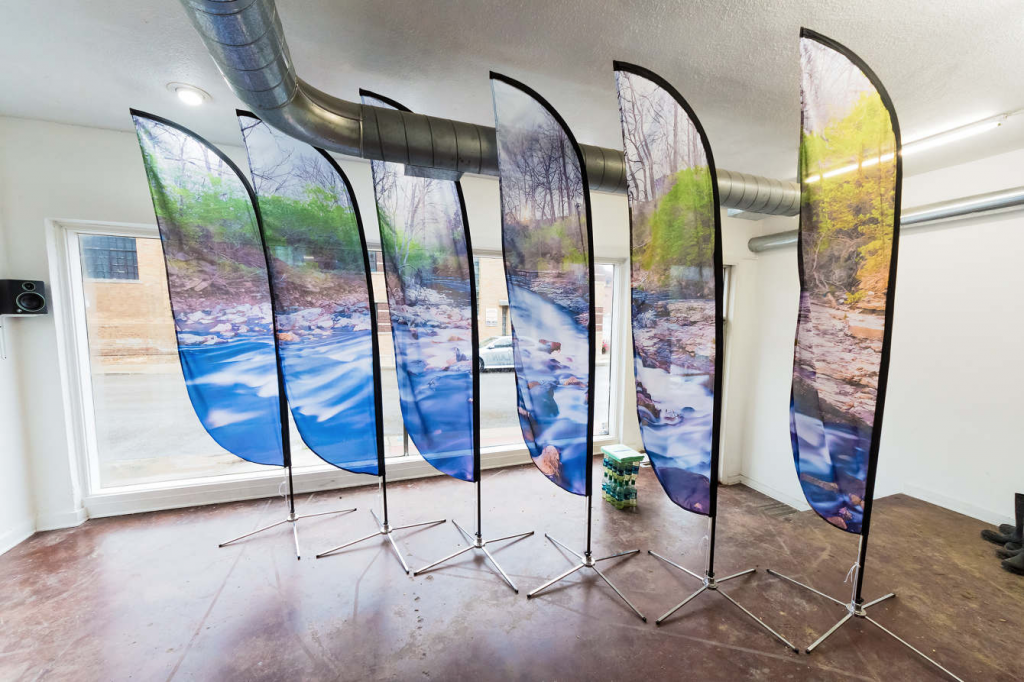
Floodplain Buyout by Timothy Amundson. Floodplain Buyout was an exhibition materialized through a series of an interactive experiences hosted by Front/Space and organized by the Turkey Creek Institute of Phenomenal Awareness (TCIPA). The exhibition utilized various artistic approaches including photographic based sculptures and an immersive sound installation to render abstract observations regarding the cultural, ontological, environmental, and spiritual conditions of Turkey Creek.
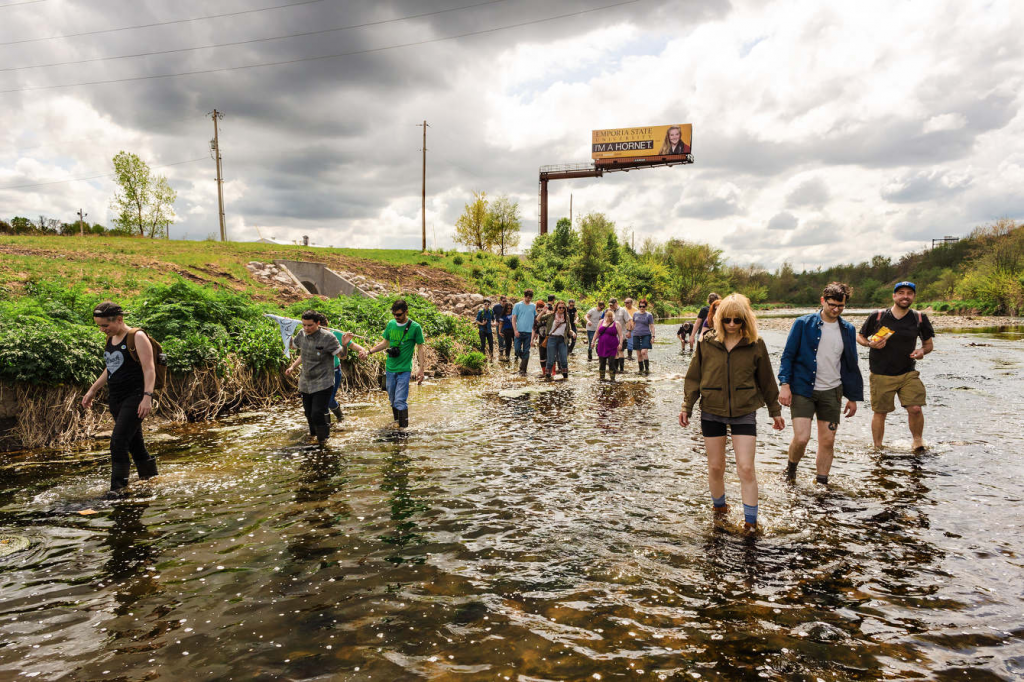
TCIPA also regularly opened a portal in Front/Space through which to transport participants to any number of undisclosed locations within the Turkey Creek watershed. This portal was activated over 50 times throughout the course of the exhibition, inviting viewers into personal and shared quests as a way of re-imagining relationships between commerce, development, architecture, land-use, and self. The way we see the city when we drive around in cars, and go into stores, and follow the directions our phones tell us to, was to be decidedly different along the creek.


